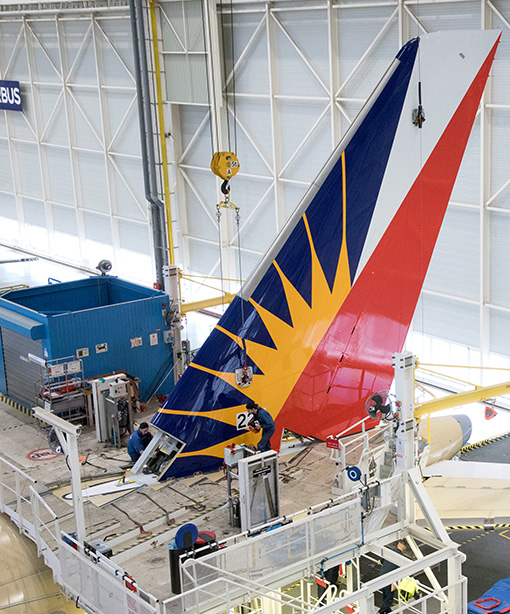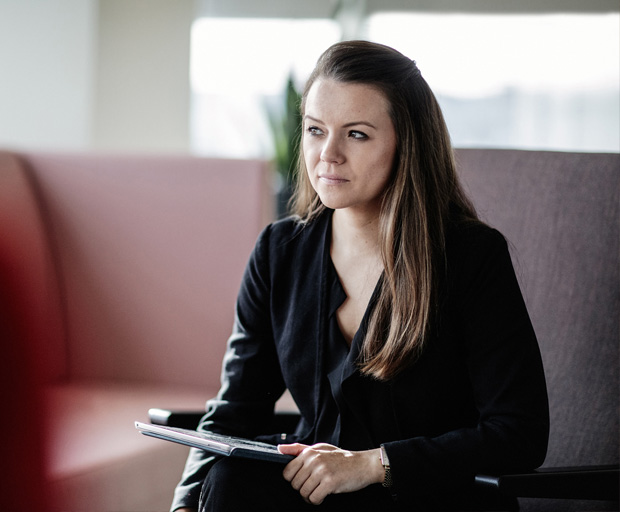Financial
Review


Profit before tax increased by 8% to a record $344 million from average operating lease asset growth of 5.4%.
Barry Flannery
Chief Financial Officer

A new high of $1.1 billion was also recorded for income from continuing operations. Total aircraft assets stood at $11.9 billion at year end while core operating margin was 42.1% for the year.
This continued strong performance was achieved through a combination of better returns from our aircraft and increased revenues from management fees and continued focus on cost control.
It was a very active year from a transactional perspective, including the placement of 47 aircraft from our order book and commitments to the purchase and lease back of 40 aircraft, including 38 of the newest technology aircraft. We also took advantage of the strong market for aircraft sales selling 30 owned aircraft with an average age of 9.5 years, whilst realising attractive gains.
This activity also resulted in further progress towards the transitioning of our fleet to the newest technology aircraft with 37% of the portfolio now the latest technology type of aircraft, up from 22% in March 2018 and 11% in March 2017. We finished the year with a weighted average age of our portfolio of just 4.2 years.
Our order for 65 A320neo aircraft from Airbus in December 2018 will further contribute to our requirements for new aircraft up until 2025.
We continue to work on our differentiated strategy within our industry. This differentiation is achieved through our strong relationship with our shareholders and is manifested in our ability to offer the broadest product range in comparison with our peers. Shareholder confidence in our strategy was further evidenced this year when we received another $1 billion in capital to strengthen our capital and liquidity base. This brought total shareholder support to $9.2 billion at year end and reduced our leverage to 2.3 times debt to equity, comfortably within our target of three times debt to equity.
Our order for 65 A320neo aircraft from Airbus in December 2018 will further contribute to our requirements for new aircraft up until 2025.



That strengthened capital base was reflected in the decision by S&P to upgrade our credit rating to A-, meaning that we now hold this rating from both S&P and Fitch. This is the highest rating in the industry of any dedicated aircraft lessor.
We raised $700 million of third party finance during the year including a successful public bond issuance of $500 million and completed another $500 million public bond offering shortly after the year end. Both offerings were heavily oversubscribed and demonstrated investor confidence in our business.
We seek to minimize volitility in earnings by aligning operating lease assets and debt liabilities. Our weighted average lease term currently stands at 6.9 years and this is closely matched by our weighted average borrowing term of 6.6 years, giving us the closest alignment within the industry.
That strengthened capital base was reflected in the decision by S&P to upgrade our credit rating to A-, meaning that we now hold this rating from both S&P and Fitch. This is the highest rating in the industry of any dedicated aircraft lessor.
We raised $700 million of third party finance during the year including a successful public bond issuance of $500 million and completed another $500 million public bond offering shortly after the year end. Both offerings were heavily oversubscribed and demonstrated investor confidence in our business.
We seek to minimize volitility in earnings by aligning operating lease assets and debt liabilities. Our weighted average lease term currently stands at 6.9 years and this is closely matched by our weighted average borrowing term of 6.6 years, giving us the closest alignment within the industry.



We are well placed to withstand potential market volatility thanks to a strong level of liquidity
The business is very well positioned for the future. Contracted rental revenues for the fleet are approximately $7.2 billion. This gives a clear line of sight of future income and represents 90% of all debt outstanding.
Recognising the potential for financial market turbulence in the years ahead, we will focus on further funding diversification over the next 12 to 24 months, with expected issuances into both public and private markets.
The business is also very well covered in terms of meeting its funding requirements. Our capex requirements will be funded from a combination of ongoing operating cashflow, continued trading of aircraft and from further debt raising.
With cash generated by operations of over $1 billion and more than $1 billion worth of aircraft on average sold in each of the last four years, we are confident that we will achieve that goal. Furthermore, we are well placed to withstand potential market volatility thanks to a strong level of liquidity, which stood at $3.8 billion at year end.
This will also support the transitioning of our fleet, which will see us continue to replace older aircraft with the newest technology types required by our customers. We expect that the pace of transition will be faster than the broader industry.
In terms of debt liabilities, we have very manageable levels of debt maturities over the next number of years. Third party debt maturities in the next 12 months total $300 million while the average over the next five years is approximately $660 million per annum, a very low level in comparison to our investment grade industry peer group average of $1.9 billion per annum.
We will continue to maintain the close match between our assets and liabilities and, backed by the flexible and revolving funding available from our shareholders, will ensure that SMBC Aviation Capital remains a strong, stable business into the future.